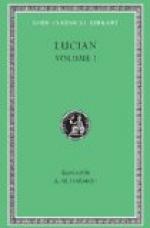“It is difficult,” says this undoubted authority, “to arrive at even approximately the number of Indians who were encamped in the valley of the Little Big Horn when Custer’s command reached there on June 25th, 1876; the indifference of the Indians as to ascertaining their strength by actual count, and their ideas at that time being too crude to know themselves. I have been stationed at this Agency since the surrendered hostiles were brought here in the summer of 1881, and have conversed frequently with many of the Indians who were engaged in that fight, and more particularly with ‘Gall,’ ‘Crow King,’ ‘Big Road,’ ‘Hump,’ ’Sitting Bull,’ ‘Gray Eagle,’ ‘Spotted Horn Bull,’ and other prominent men of the Sioux, regarding the Custer affair. When questioned as to the number of Indians engaged, the answer has invariably been, ’None of us knew; nina wicoti,’ which means ‘very many lodges.’ From this source of information, which is the best obtainable, I place the number of male adults then in the camp at 3,000; and that on June 25th, 1876, the fighting strength of the Indians was between 2,500 and 3,000, and more probably approximating the latter number.
“‘Sitting Bull’ was a recognized medicine man, and of great repute among the Sioux, not so much for his powers of healing and curing the sick—which, after he had regained such renown, was beneath his dignity—as for his prophecies; and no matter how absurd his prophecies might be, he found ready believers and willing followers, and when his prophecies failed to come to pass, he always succeeded in satisfying his over-credulous followers by giving some absurd reason. For instance, I was in his camp on Grande River in the spring of 1888, sometime about the end of June. There had been no rain for some weeks, and crops were suffering from drouth, and I remarked to him, who was in an assemblage of a large number of Indians of that district, that the crops needed rain badly, and that if much longer without rain the crops would amount to nothing. He, ‘Sitting Bull,’ replied: ’Yes, the crops need rain, and my people have been importuning me to have it rain. I am considering the matter as to whether I will or not. I can make it rain any time I wish, but I fear hail. I cannot control hail, and should I make it rain, heavy hail might follow, which would ruin the prairie grass as well as the crops, and our horses and our cattle would thus be deprived of subsistence.’ He made this statement with as much apparent candor as it was possible for a man to give expression to, and there was not an Indian among his hearers but appeared to accept it as within his power.
“‘Sitting Bull’ was dull in intellect, and not near as able a man as ‘Gall,’ ‘Hump,’ ‘Crow,’ and many others who were regarded as subordinate to him; but he was an adept schemer and very cunning, and could work upon the credulity of the Indians to a wonderful degree, and this, together with great obstinacy and tenacity, gained for him his world-wide reputation. ‘Sitting




